Monstera: propagation by cuttings, seeds and aerial roots
Plant monstera - originally from the countries of South America. Observing the rules of breeding and caring for the monster, you can decorate your home or place of work with a green friend who will cleanse the air of harmful impurities, give coolness and freshness.
Content:
- Indoor flower description
- Pot and soil preparation
- Propagation by cuttings and aerial roots
- Other breeding methods
- Proper plant care
- Monstera transplant
- Plant pests and control
- Monstera diseases, how to avoid them
- Types of monstera
Indoor flower description
Monstera belongs to the family lianasso a support is needed to support the stem of the plant. The leaves of the plant are unusual, they are dissected, have long cuttings, their diameter reaches half a meter. Only in a young plant are they whole.
The leaves are dark green in color, smooth, shiny, sometimes with drops of transparent liquid on the surface, as if the plant is crying.
Some believe that flowercrying predicts rainy weather. The height of the monstera sometimes reaches 10 meters. But in captivity it does not grow above 5 meters. During its life, the plant has many aerial roots hanging down.
Monstera blooms rarely, but the flowers will delight its owner: they look like a huge lily of snow-white color. As it withers, the flower leaves an ear of berries that smell like pineapple. Every florist wants to breed this gorgeous
Pot and soil preparation
Since the monstera grows quite tall and it produces many roots hanging in the air, the pot must be taken spacious, putting a drainage expanded clay layer on the bottom.
The soil must be prepared with good air and moisture permeability.
To do this, take the same amount of sod and leaf land, humus, sand, and three times more peat. The following soil composition is also suitable: mix equal parts of peat, leafy earth, sand, humus with a large amount of sod land. Before planting, the soil mixture must be sterilized. Such a fertile base for a tropical beauty will allow her to have enough moisture and air.
Propagation by cuttings and aerial roots
Tips for grafting:
- Plant propagation can be carried out in the spring.
- For reproduction cuttings the lateral or upper branches are cut off, not forgetting to leave a knot and at least one mature leaf on them.
- In size, cuttings should be short, because long ones take root less well.
- The upper cut, which is located above the kidney, is usually straight, and the lower one is made oblique.
- The crushed charcoal is sprinkled on the slices, and then dried a little.
- Cuttings planted in prepared moist soil.
- When planting, it is necessary to submerge the knot from which the aerial roots will go halfway into the ground.
- Until the stalk takes root, you need to regularly spray up to twice a day.
- You can cover the pot with glass or put a plastic bottle on the stem.
- As soon as it gives roots, it is transplanted into another vessel.
It is very easy to propagate monstera with air layers. In this type of reproduction, a cut is cut, on which there is an aerial root and a leaf. Place this part in a pot of prepared soil and care for it like a normal plant.
Other breeding methods
For breeding you can use other methods: seeds and rhizome. Seed propagation is also typical for this tropical plant, especially when they want to develop new varieties.
For sowing it is necessary:
- Take only fresh the seeds.
- Sprout them in polyethylene bags, putting wet sphagnum moss there.
- The temperature for germination should be at least 25 degrees.
- Usually, seedlings appear in a month and a half.
- Young monstera sprouts are transplanted into prepared pots.
- The room should be bright and warm.
- The development of seedlings is rather slow. Only after a year, 8-10 leaves will appear on the stem.
The monstera rhizome is divided into several parts, so that each part has a rosette of leaves or a bud.
And they plant it in the same way as when propagating by cuttings. By digging in a trunk with an aerial root, you can get a new plant. Then it is separated and placed in another pot. When the leaf of the transplanted plant becomes elastic, it means that the plant has taken root, has grown stronger. And then caring for him is the same as for an adult monster.
Proper plant care
If the houseplant is kept in the same conditions in which it was in the wild, then this will be the right care for it.
The homeland of the monstera is the tropics, so it needs to create similar conditions for growth:
- Proper lighting of the plant plays a big role in its development. Monstera does not like shade, but bright sunlight will not do her any good. The sprayed light of the sun works best. Then the leaves of the plant will be large and shiny, they will delight you with their dark green color and openwork cuts. If there is not enough lighting, then we will not see cuts and holes in the leaves. In bright light, the leaves will turn pale and covered with yellow spots. The lighting will depend on where the plant is placed. It is not recommended to put it by the window, otherwise the monstera will completely cover it with its huge leaves. It is better to put it from the window at a distance of about 1 - 2 meters, and where a shadow will fall on the monster, make additional lighting using fluorescent lamps. During winter, when there is very little sunlight, the plant will have to be illuminated around the clock.
- The tropics are characterized by high humidity, so the monster is watered abundantly, especially from early spring to late autumn. But it is necessary not to overdo it, the soil should dry out between waterings. In winter, the frequency glaze cut, but care must be taken that the earth does not dry out. For irrigation, use warm water, having previously defended it. Do not water it with cold spring water, otherwise the plant will get sick. The leaves of a tropical flower are periodically washed, removing dust from them, and also sprayed to maintain moisture. Some experts recommend washing the leaves by adding milk to the water. In this case, the foliage of the plant will shine, as if it was polished.
- Top dressing monsters produce complex mineral and organic fertilizers... The young are fed once every half a month, and the adult - when there is a need for it. The fertilizer dosage should be 2 times less than the recommendation on the package. In addition, the top earthen layer of the plant is annually renewed, falling asleep with humus. Many water the monster with cow dung infusion. This is especially true for large plants.
- To stimulate the growth of new leaves and plant renewal, the top is cut off in early spring. Cut, making a small indent from the plant node. The cut should be straight, then sprinkled with crushed charcoal.Aerial roots cannot be cut off. If there are a lot of them and they do not fit into the pot, some of them can be directed to the ground for rooting and transplants parts of the plant. The roots of the plant are always kept moist. To do this, they are even wrapped in moss, constantly wetting it.
Transplant fitter
Plants are transplanted in order to replace the top layer of the earth. Any indoor plant once a year should be transplant... The installer is no exception. Transplanting especially concerns young plants. They are transplanted every year in the spring.
Plants over 4 years old can be replanted once every 3 years. Transplanting is carried out in large pots or tubs, having previously filled in the appropriate soil there. The soil in the pot should be loose and fertile.
When transplanting, try to take care of the aerial roots.
Do not forget that the houseplant belongs to the genus of lianas, and it needs to prepare a support that will help it grow up. And place the pot of the transplanted plant away from the entrance, otherwise the leaves may be damaged. You cannot constantly touch and touch them. The plant may even die. And it also doesn't like drafts.
Plant pests and control
Most often pests monsters are:
- Colonies of thrips appear on the back of the monstera leaves. And from above, many light points are visible. To destroy the pest, the plant is sprayed with insecticidal drugs.
- The spider mite makes the leaves of the plant sluggish and lifeless, a cobweb appears. Spraying regularly with soapy water will help control the pest.
- If brown plaques appeared on the leaves of the fitter, and then the leaf falls off, then the plant was struck by scabies. They are fought with in the same way as with a tick.
- Mealybugs attack young shoots and leaves. Those shrink, dry, even fall off. This pest can be eliminated by spraying with soapy water or Intavir.
Monstera diseases, how to avoid them
When a condition of the disease manifests itself on the leaves of a plant, the following tips must be followed:
- Leaves are very yellow - cut watering plants.
- Brown spots appear - watering is insufficient.
- The leaves turn yellow and fall off - the plant is hot.
- The leaves brighten, become transparent - there is too much lighting, or chlorosis has struck the fitter. An iron supplement is needed to treat the disease.
- The leaves look like brown paper - the plant is cramped in a pot.
- The leaves are crying profusely, around the tub with the plant is damp - high humidity.
Types of monstera
This tropical plant has about 50 species. Not everything can be grown at home.
- The most common monstera, which is called attractive and delicious. Its leaves look like big hearts. And she can please with delicious fruits.
- Monstera from Mexico Borziga is compact and often used for landscaping premises.
- The variegated monstera is famous for the beauty of its leaves, which are covered with beige spots. Also interesting is the monstera originally from Brazil. The leaves are egg-shaped, with many holes. And in monstera, punctured or leaky leaves with curly cuts expand closer to the trunk.
Any kind of this wonderful plant will only delight its owners.
More information can be found in the video.



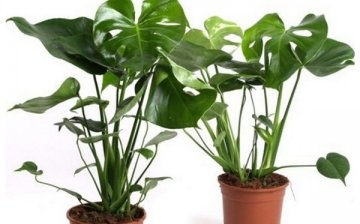
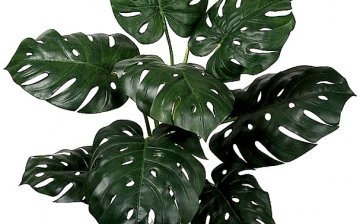
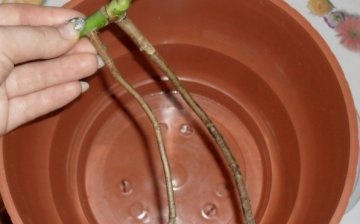
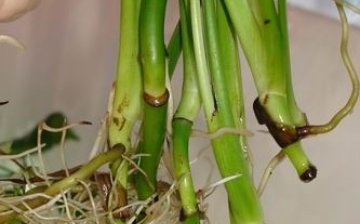
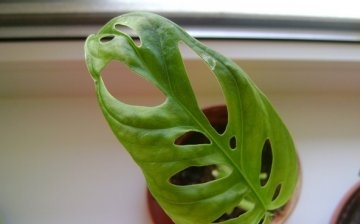
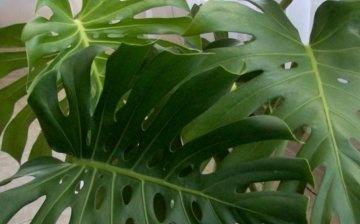
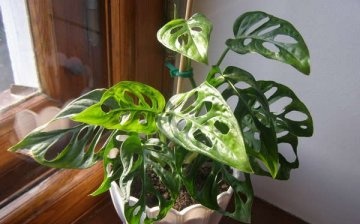
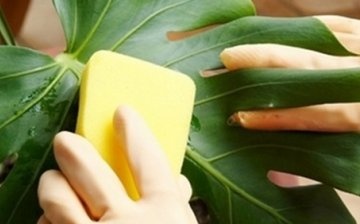
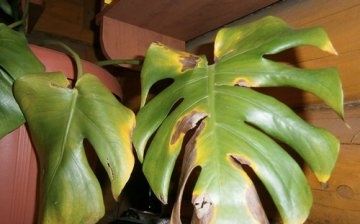
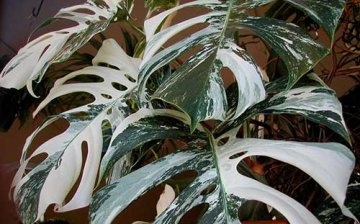










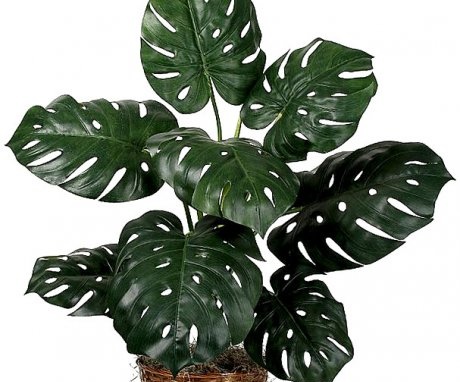
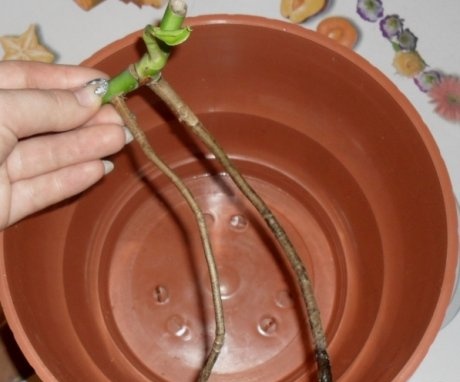
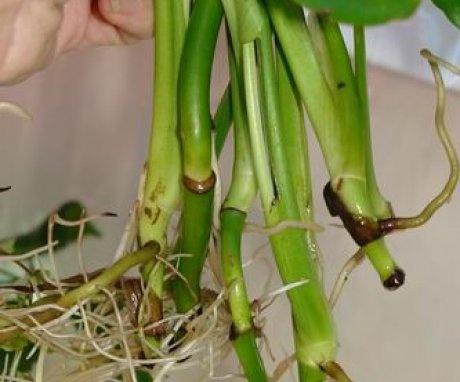
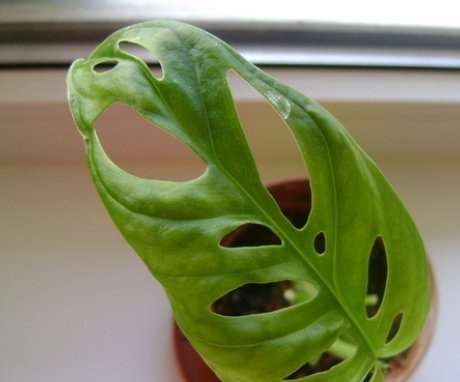
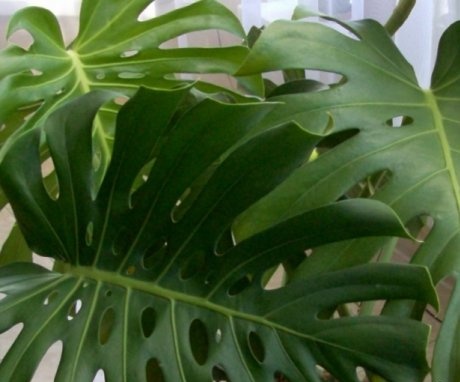
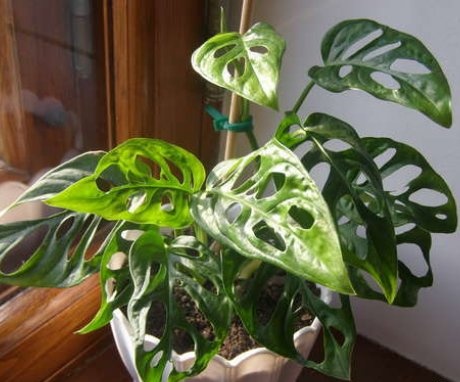
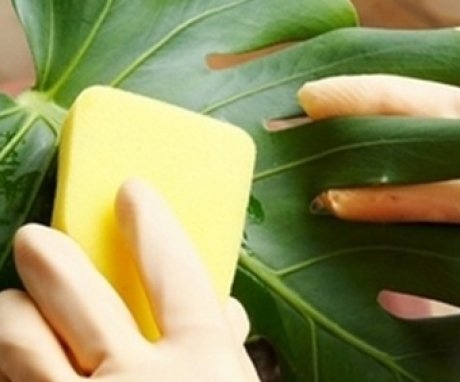
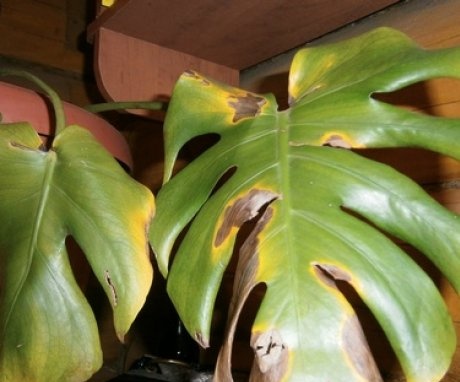
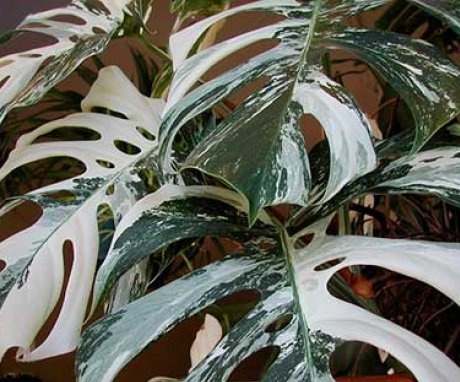
I love this monster very much. But they say it is harmful and it seems like this flower is an energy vampire. I grew up like this in my bedroom for a long time, but for some reason I could not root it. I don’t even know what’s the matter.